This page is a detailed description of the line to read before or during your journey. It covers a mix of railway history, local history and information about the scenery you will pass.
Route: Perth – Dunkeld and Birnam – Pitlochry – Blair Atholl – Kingussie – Aviemore – Inverness
Trip Length: 2 hours 20 minutes
Perth is an ancient city claiming to go back to Roman times. It functioned as the capital of Scotland until 1452 and has a long association with the Scottish Kings.
Perth railway station is in the city centre on Leonard Street. The station was built by the Scottish Central Railway and designed by Sir William Tite, who won an award for this building.
It is still an impressive building, while several old large platform clocks and architectural details keep waiting passengers amused.
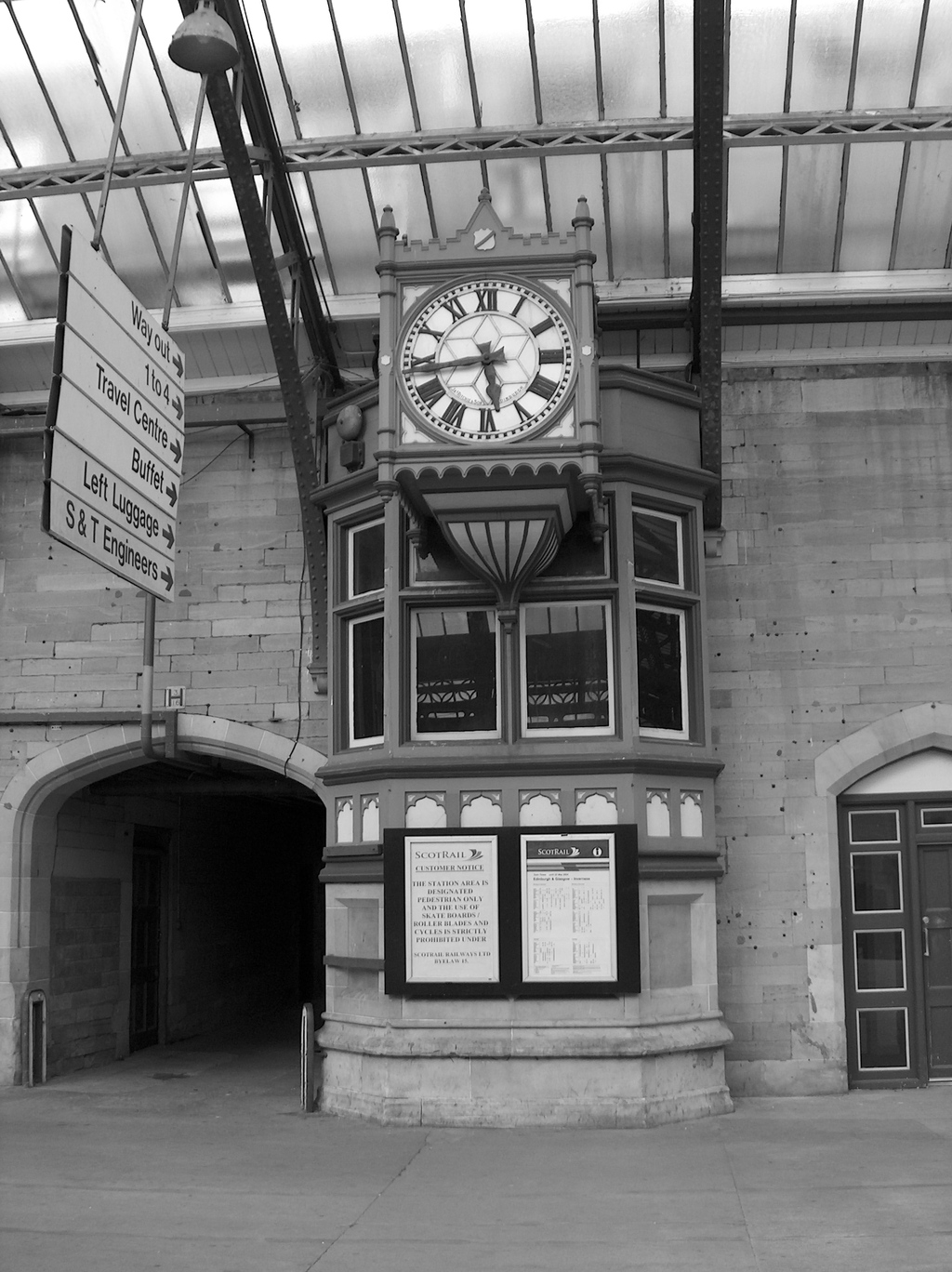
Platform Clock
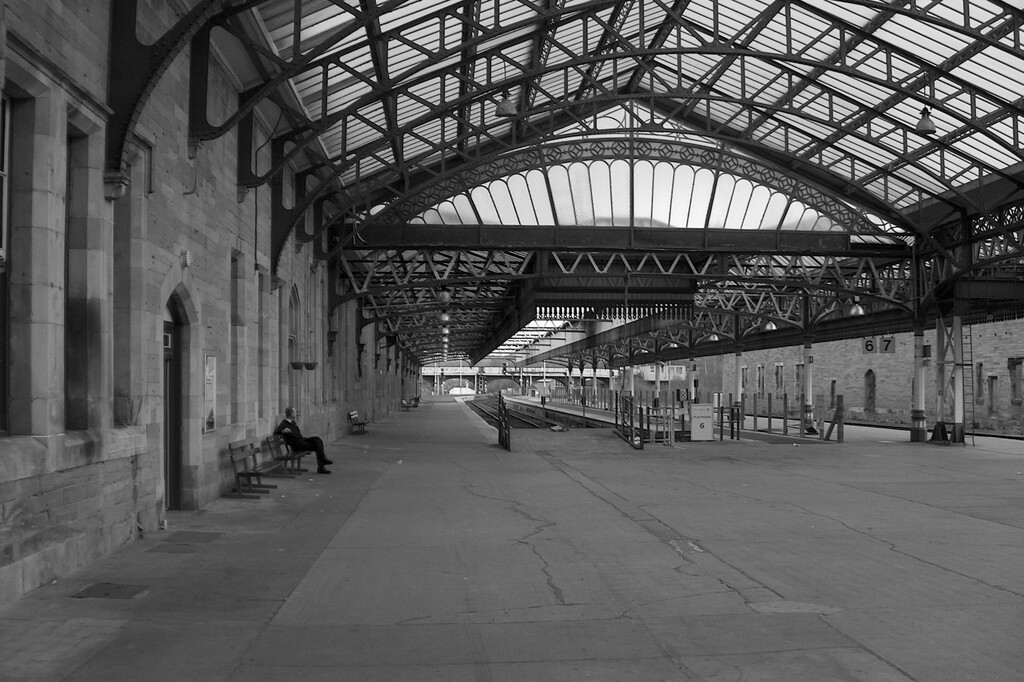
Platforms 5, 6 and 7
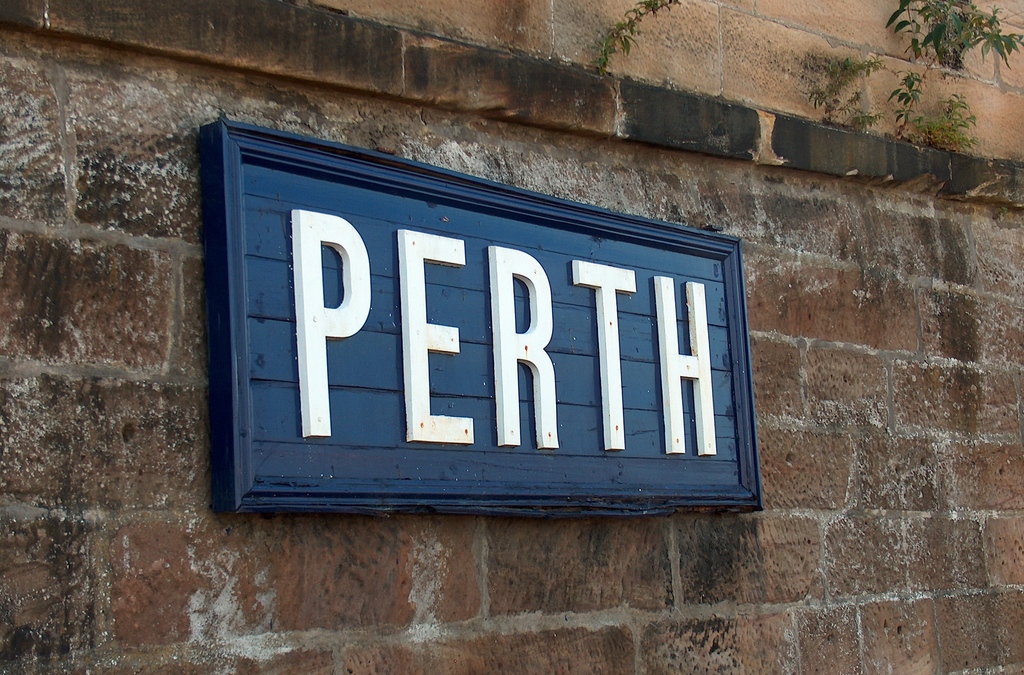
Platform Sign
On leaving Perth the train begins what is possibly one of the most beautiful stretches of line in the country, the Highland Mainline.
About two miles out of Perth, the observant may catch a glimpse of Stanley Junction. This former junction was once the start point of the Highland Railway which used the tracks of the rival Caledonian Railway to reach Perth, and is the official start of the mainline.
The line now runs through beautiful Perthshire countryside. A mixture of farmland and forest with rolling hills, it has been a popular tourist destination since the railway arrived.
The River Tay is on the right of the train until Stanley. When the River comes back into view a few miles north the train enters a narrow valley with Birnam Hill and Wood on the left and Crieff Hill on the right. This beautiful valley is the location of Dunkeld and Birnam, our next stop.
Birnam is linked to its twin village, Dunkeld, by a seven-arched bridge built by Thomas Telford. The village is surrounded by wooded and hilly Perthshire countryside, and in particular ‘The Hermitage’, a beautiful wooded gorge. The area inspired Beatrix Potter, who spent her childhood holidays here.
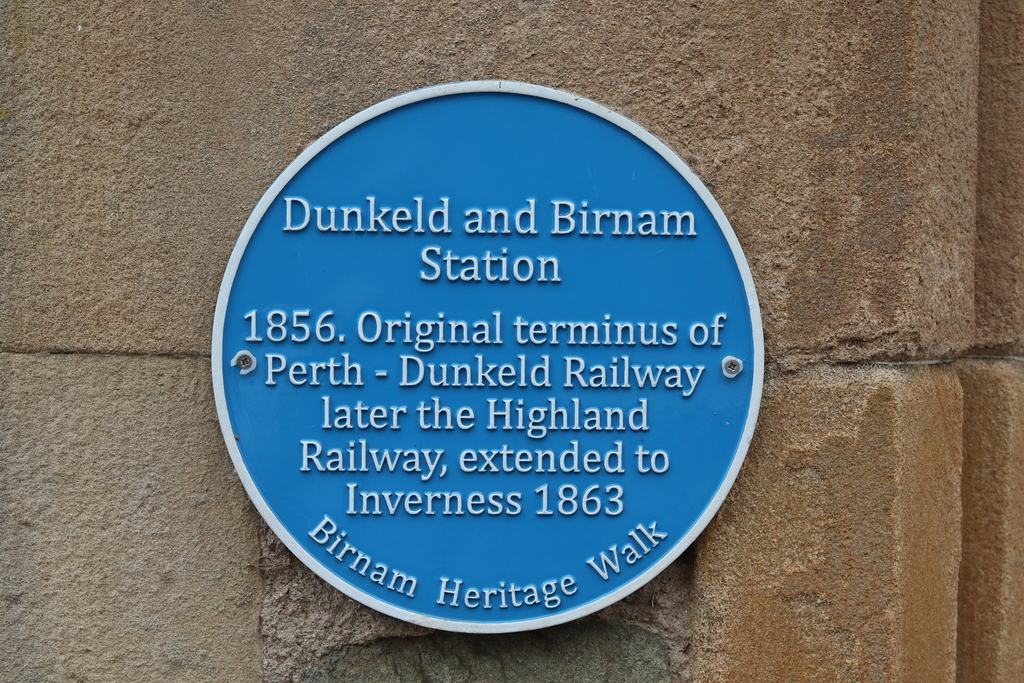
Blue Plaque on Station Building
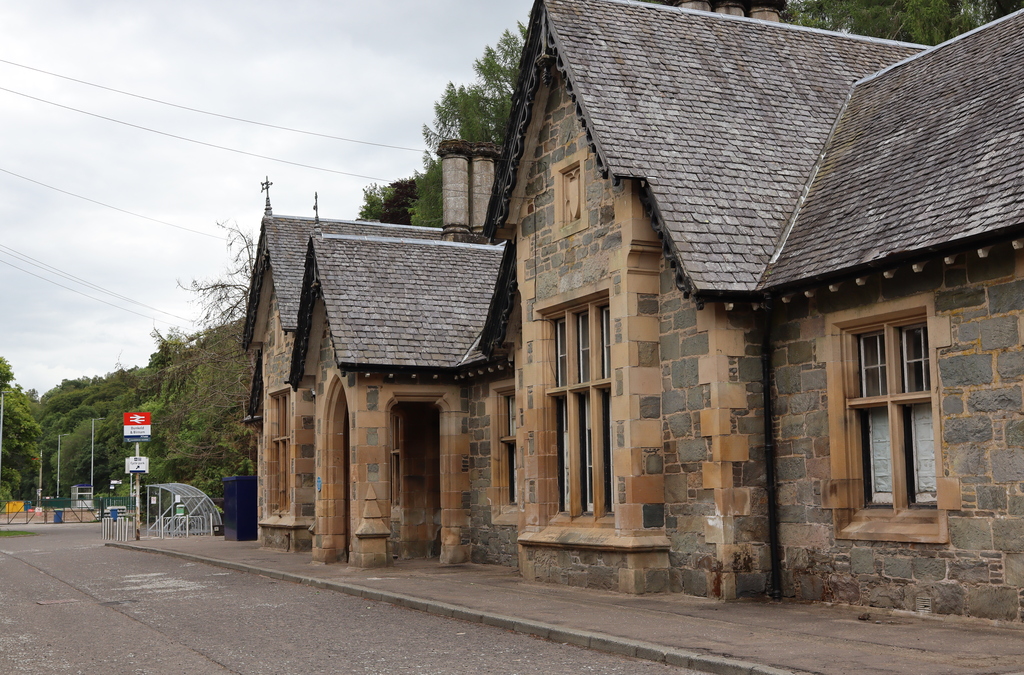
Station Building
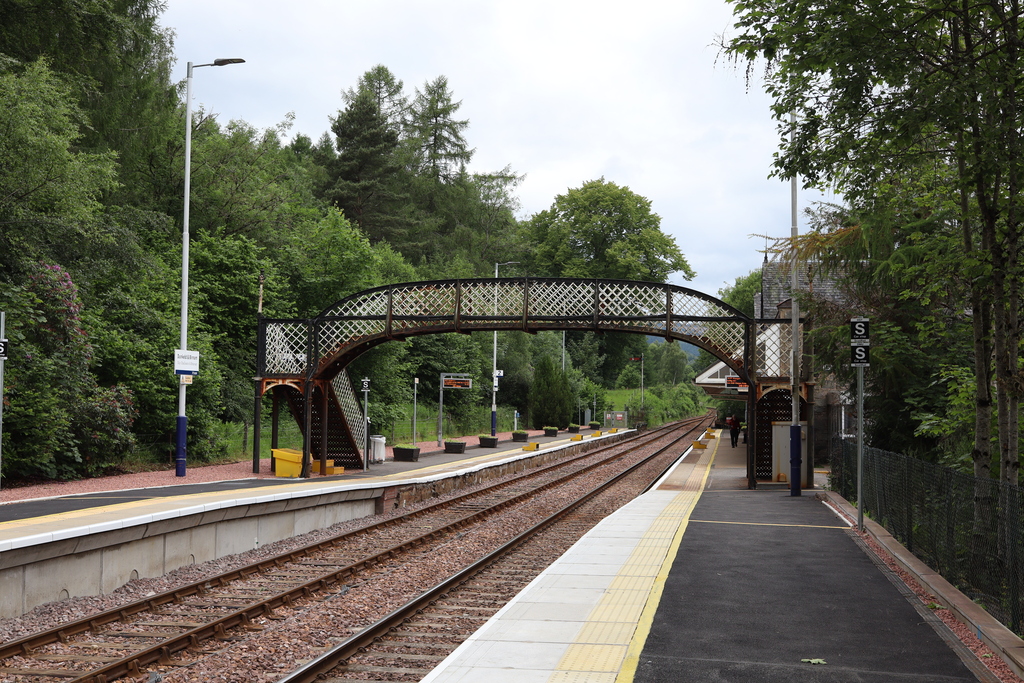
Station Platforms
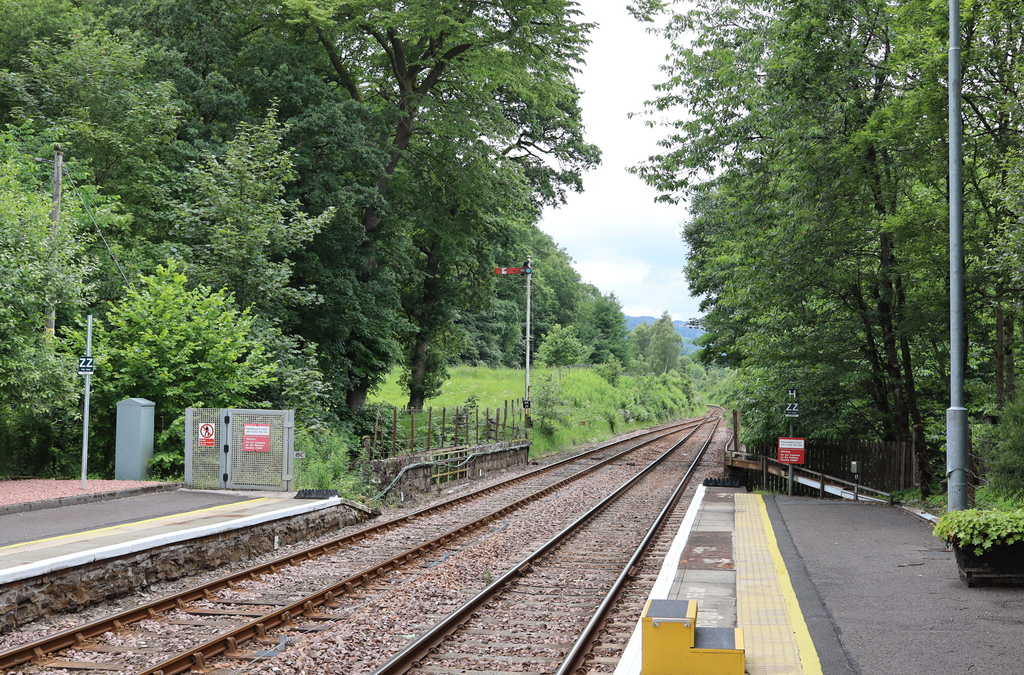
Looking north from Platform 1
The train continues north alongside the River Tay. The large woodland on the left of the train is the Tay Forest Park and Craigvinean Forest.
The train is now heading to the right, across the river Tay on a bridge and up through the valley, which has now widened into a large valley floor with the railway, river and road sharing the space between the mountains on either side of the train.
The scenery is changing too with fewer trees and more heather as the ancient forest on this higher ground has been destroyed in favour of sheep grazing and deer.
A fast sprint up the track brings Atholl Palace Hotel (in Pitlochry) with its four spires into view on the right before arrival at the station.
Pitlochry railway station is an attractive stone built building originally constructed by the Highland Railway Company. On the island platform the decorative wooden structure houses a second waiting room for that platform.
There is also a more modern ornamental ‘porter’ sculpture which is popular with children and photographers.
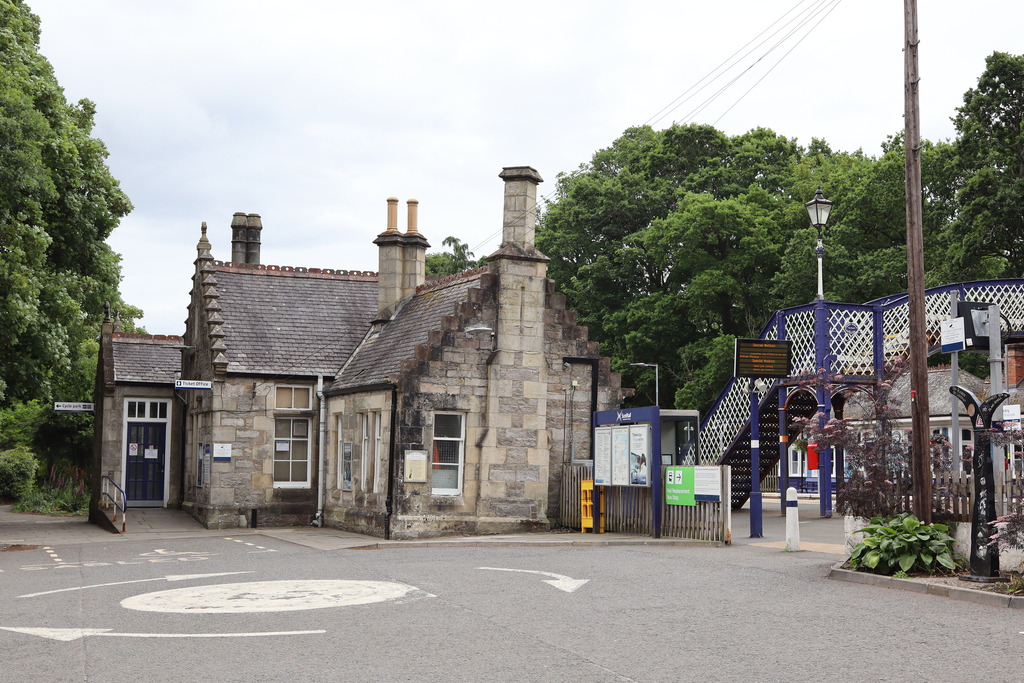
Pitlochry Station Building
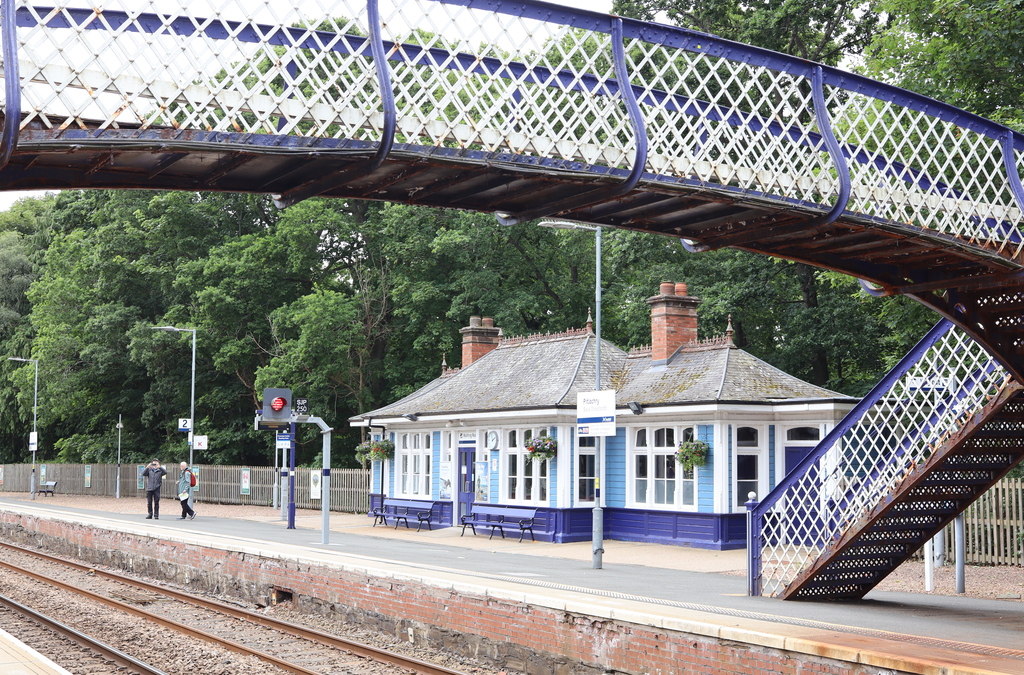
Platform 2 with attractive waiting room
On departing Pitlochry look out of the left side of the train for one of the most interesting sections of the line. The train climbs along a ledge on the side of the Killiecrankie Pass.
This very narrow ravine with the River Garry at the bottom is forested and is one of the scenic highlights of the journey. The train slows and the wheels squeal as it makes its way through the tight curves. After leaving the Pass, the valley widens and the train travels amongst the hills to Blair Atholl station.
Blair Atholl station is unstaffed as the stone building has been converted into a house. The station is situated amongst the hills and is right on the main street of the small village.
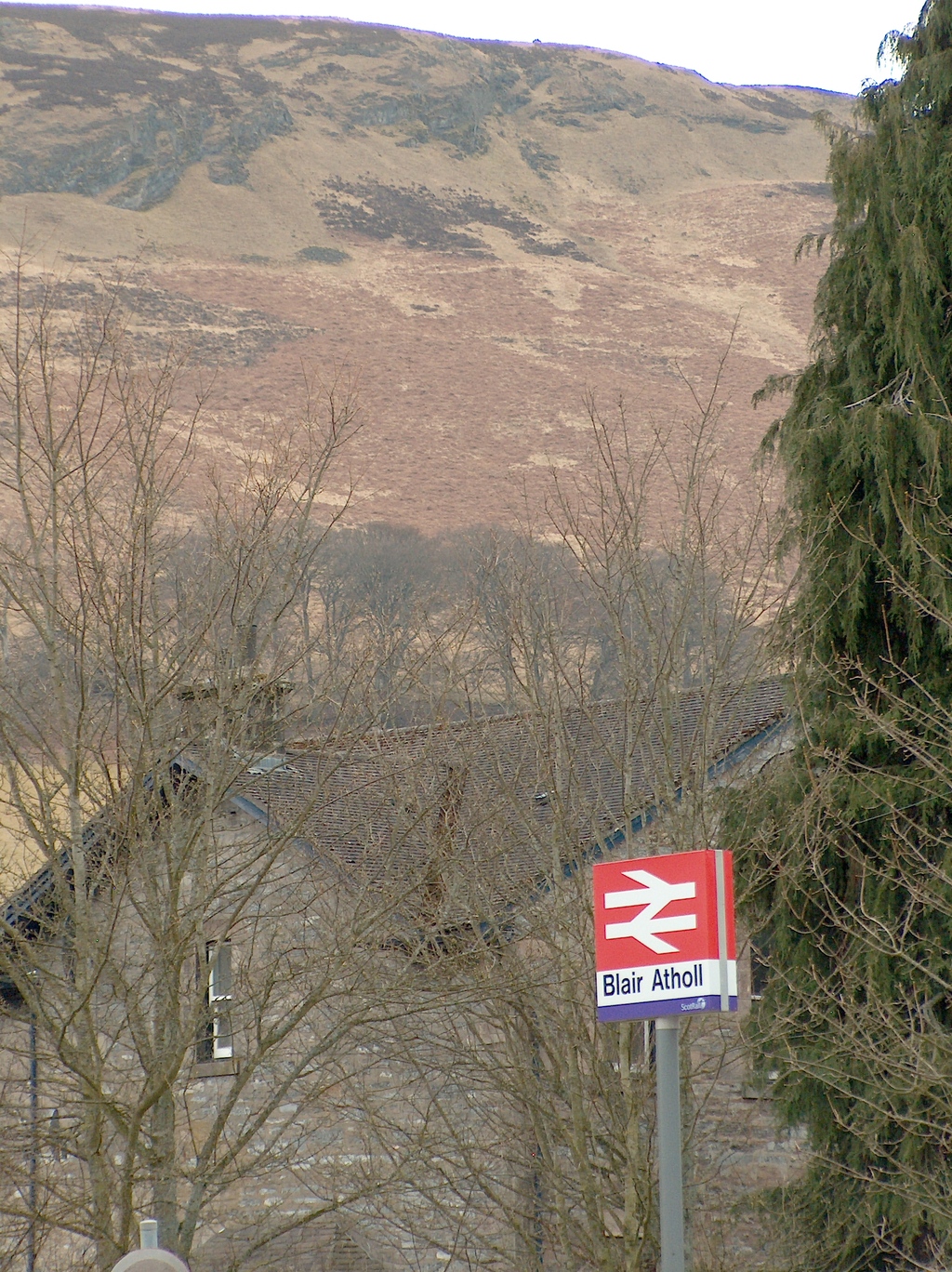
Nestled among the hills
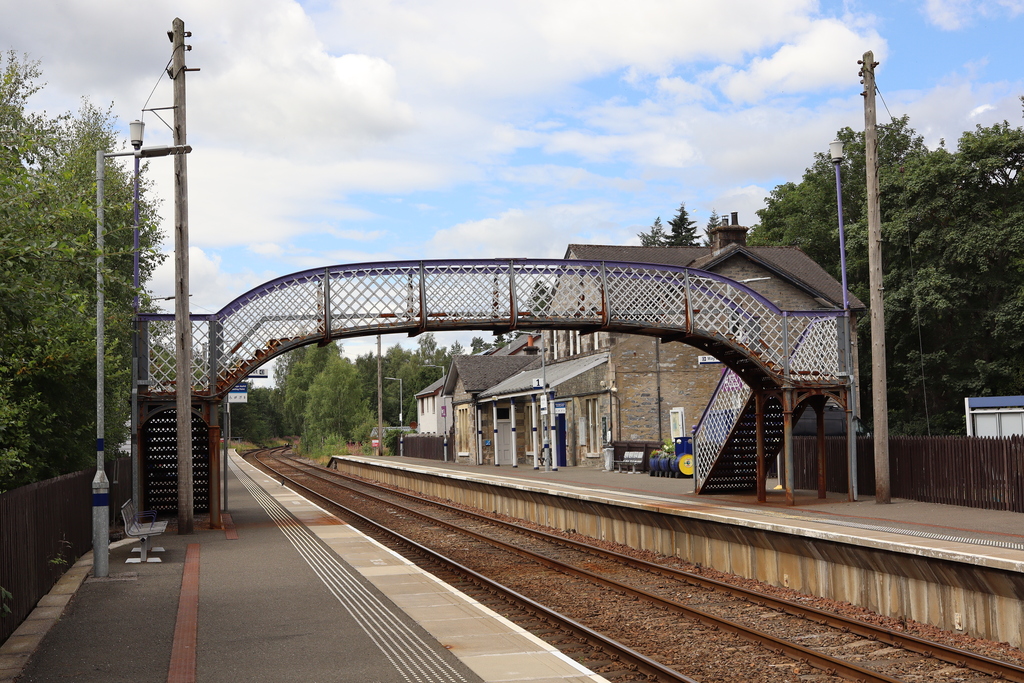
Blair Atholl Railway Station
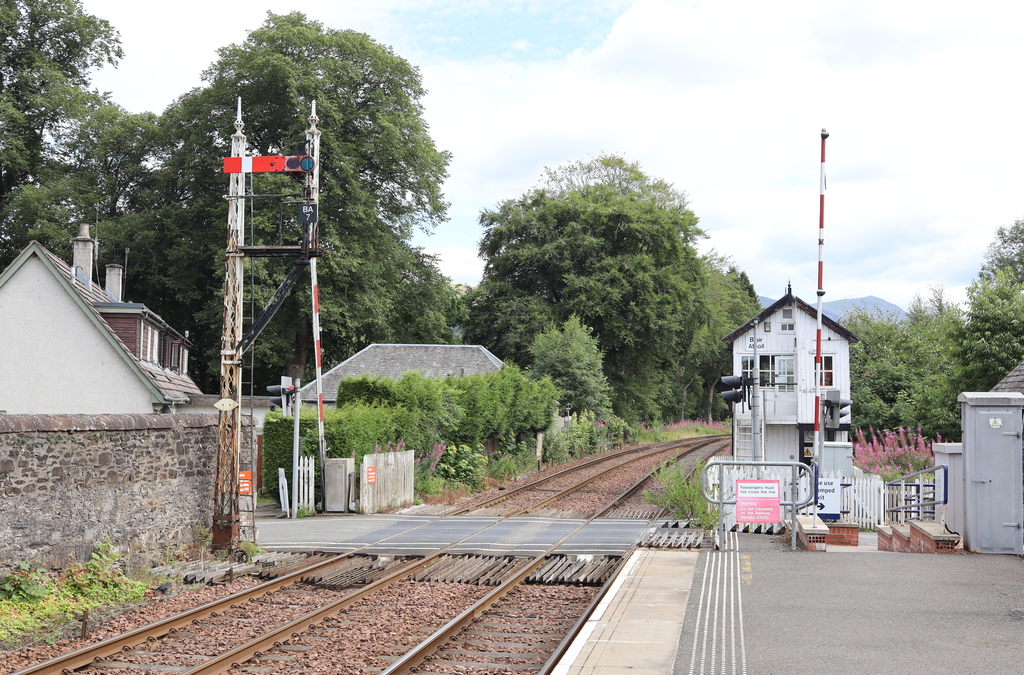
Level crossing at the south of Platform 2
The train departs Blair Atholl and makes its way through the most mountainous section of the line. Hills tower above the train on both sides of the line as Glen Garry, followed by Drumochter Pass, are crossed on one of the few easy passages of the mountains.
At the Summit of Drumochter there is a traditional sign marking the highest point on the British railway network at 1484 feet (452m). Considering that the line begins and ends at sea level it is easy to imagine why this line was quite a challenge to steam trains.
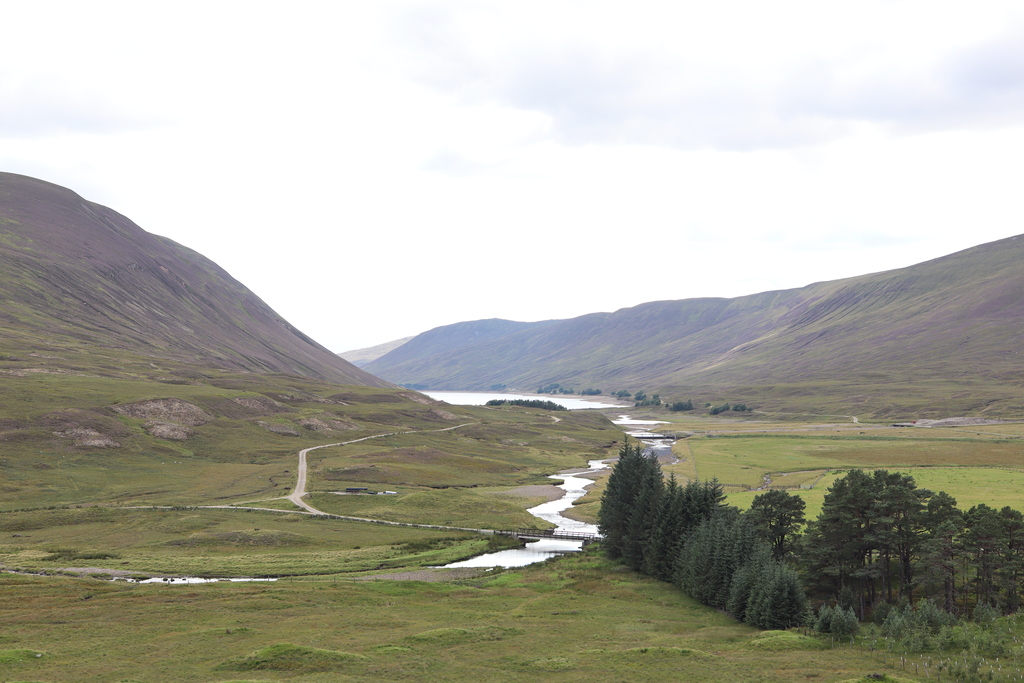
River Garry leading to Loch Garry
Dalwhinnie station is located on the street in Dalwhinnie. Shortly after leaving the station the distinctively shaped roof of Dalwhinnie Distillery’s kiln (where the grain is dried) can be seen from the train.
At this point the train enters the magnificent Cairngorm National Park. The Park begins at Dalwhinnie and the train will make its way through the Park until just after Carrbridge Station.
Glen Truim is the next section of line for the train to cross. This is one of Scotland’s major glens stretching for nearly 18 miles from Drumochter Pass to Kingussie.
The high heather covered hills on either side of the train are in contrast with the rich fertile valley floor with its attractive river meandering through.
Newtonmore Station has a traditional stone Highland station building now converted into a house. Newtonmore is a traditional Highland village with idyllic streets, houses and atmosphere.
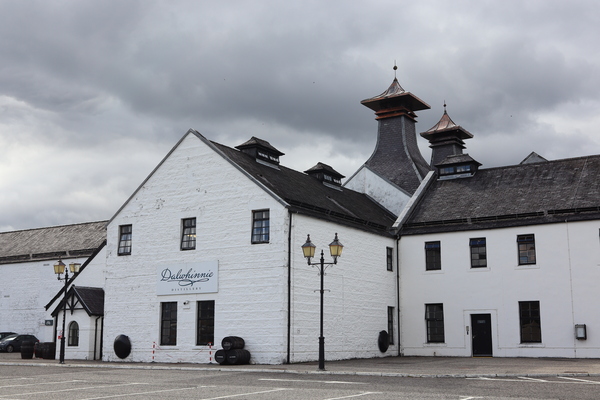
We don't have a picture of the station so here's the distillery
The train departs Newtonmore and makes the short sprint along the valley floor and alongside the River Spey to Kingussie.
Kingussie is a pleasant small Highland town. As with Newtonmore many people prefer its quieter pace compared with nearby Aviemore.
Kingussie railway station is an attractive single storey stone building built by the Highland Railway Company. It has a decorative iron, wood and glass canopy over the main platform and a traditional signal box which is still in use.
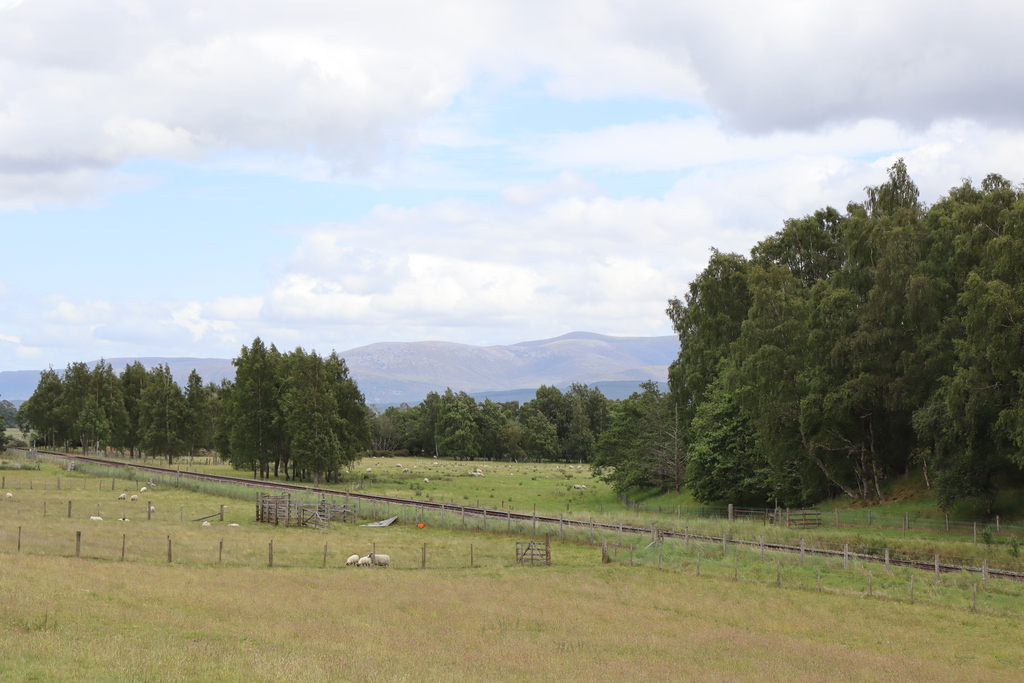
The line from Highland Folk Museum
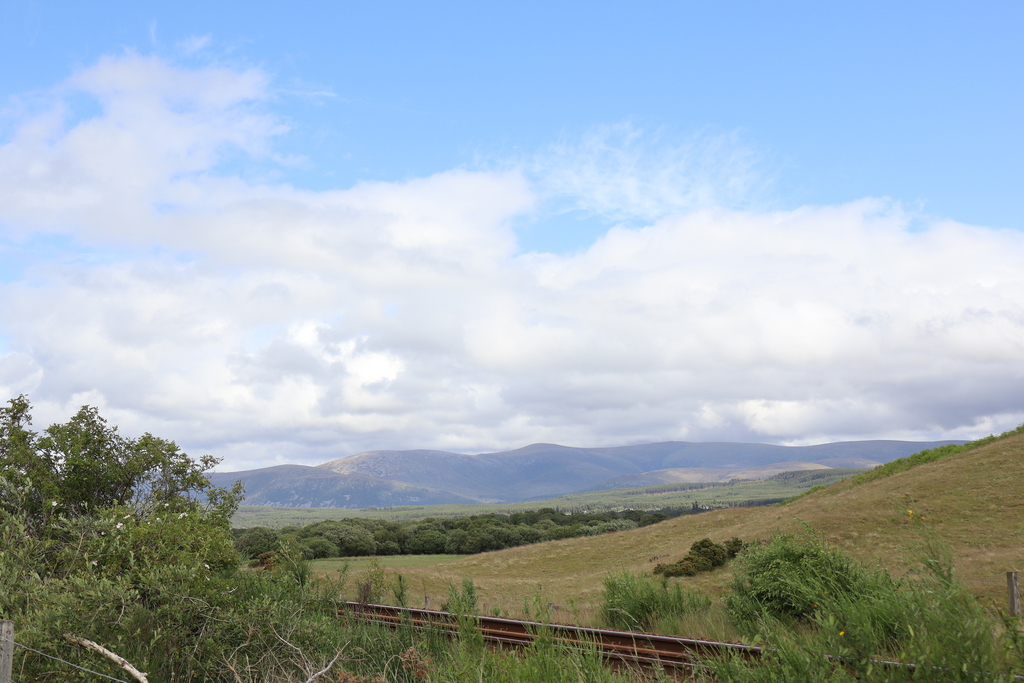
Between Newtonmore and Kingussie
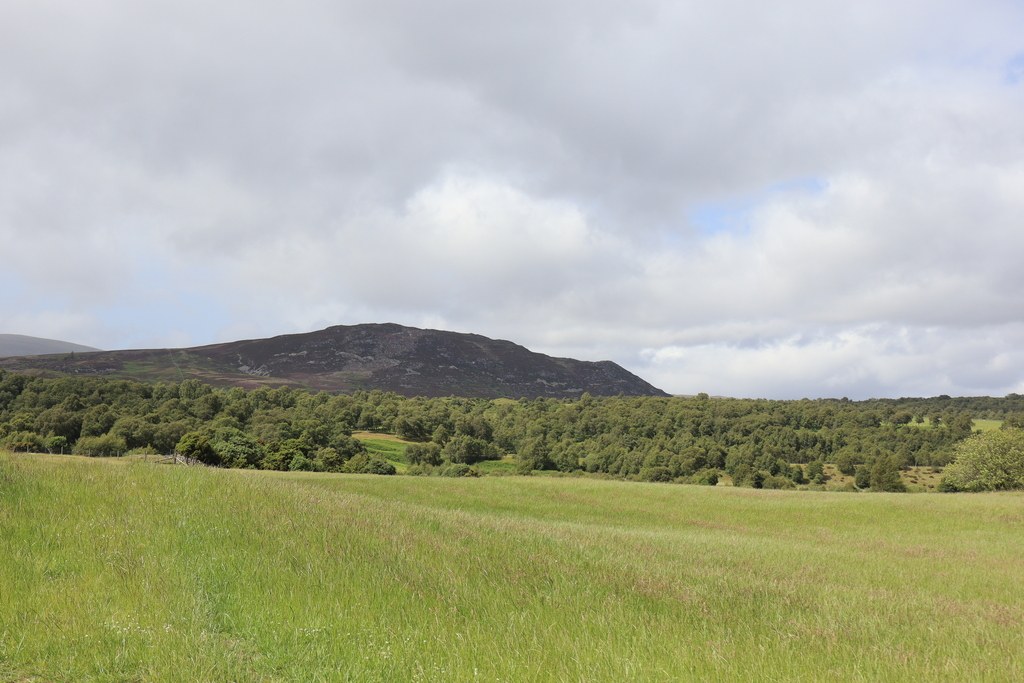
Also between Newtonmore and Kingussie
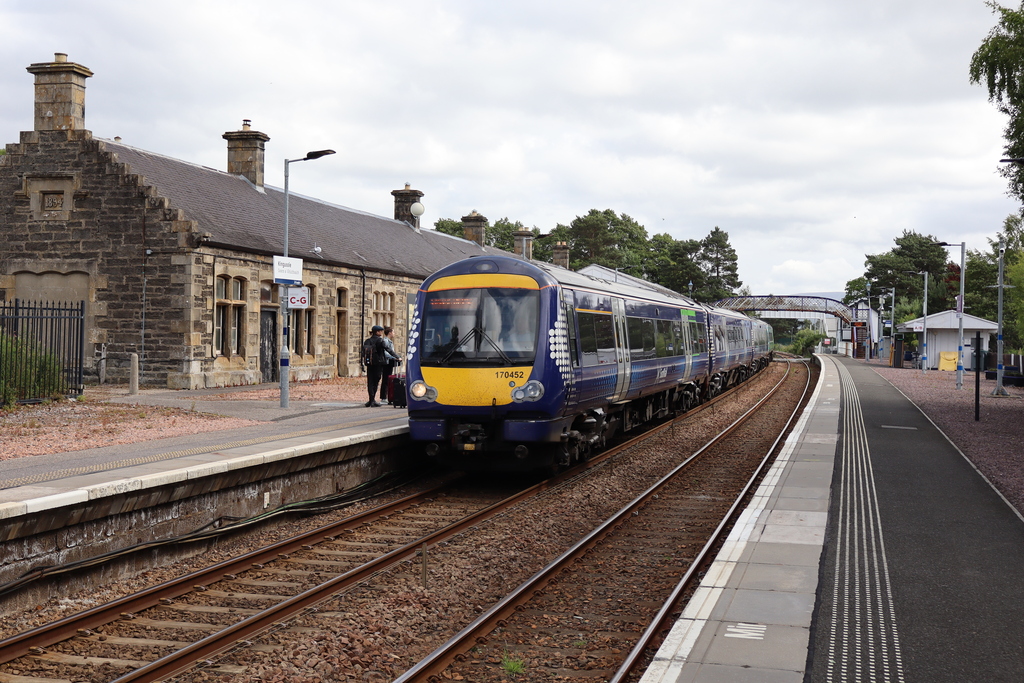
Kingussie Railway Station
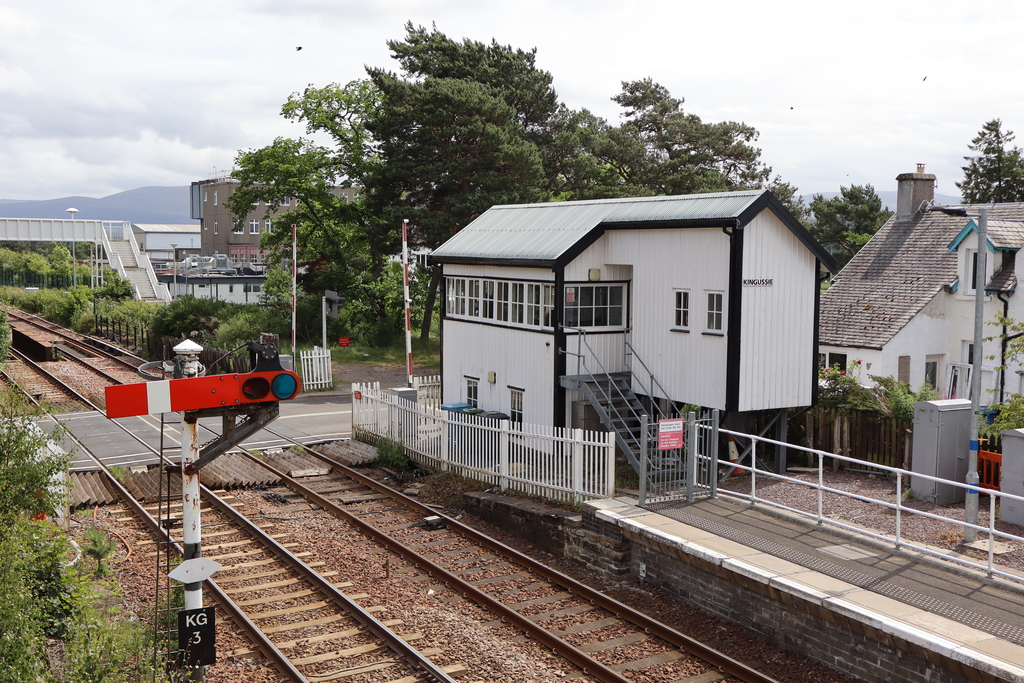
Signal box
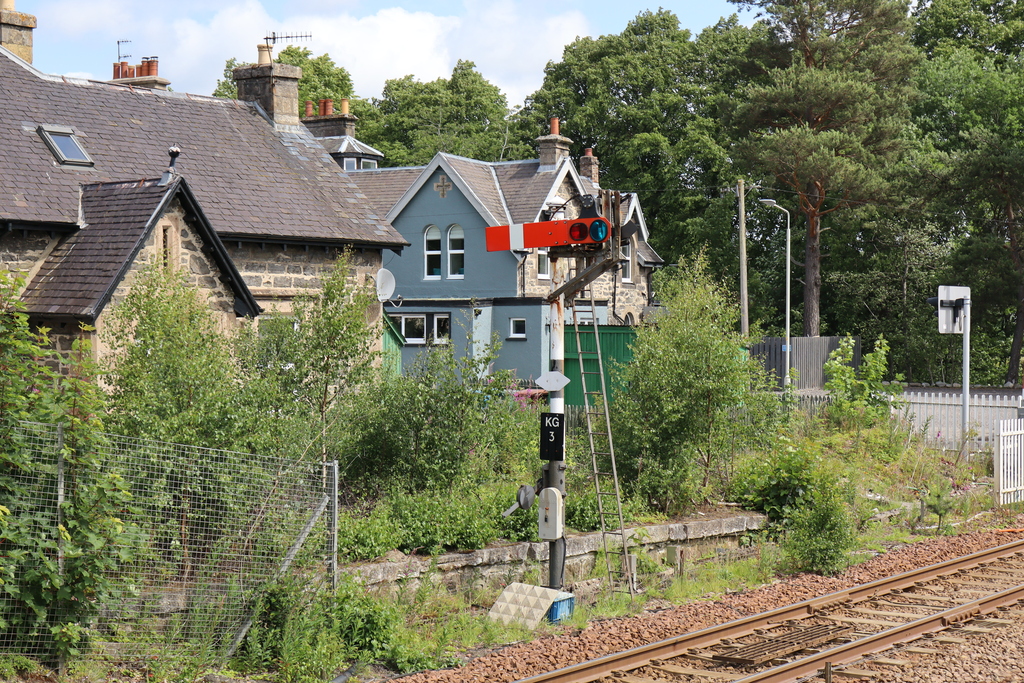
View from Platform 2 looking north
Departing from Kingussie, the journey continues along the valley. On the right side of the train enjoy views of the Insh Marshes Nature Reserve.
Behind the reserve is Inshriach Forrest. Behind the Forest the Cairngorm Mountain Range comes into view, which is the heart of the Park.
The train then makes its way alongside Loch Insh with the mountains in the background. Have your camera ready at this point especially if travelling north as the sun sets in the evening.
Beyond the Loch another smaller loch comes into view on the left, Loch Alvie and on the right is the Duke of Gordon’s Monument.
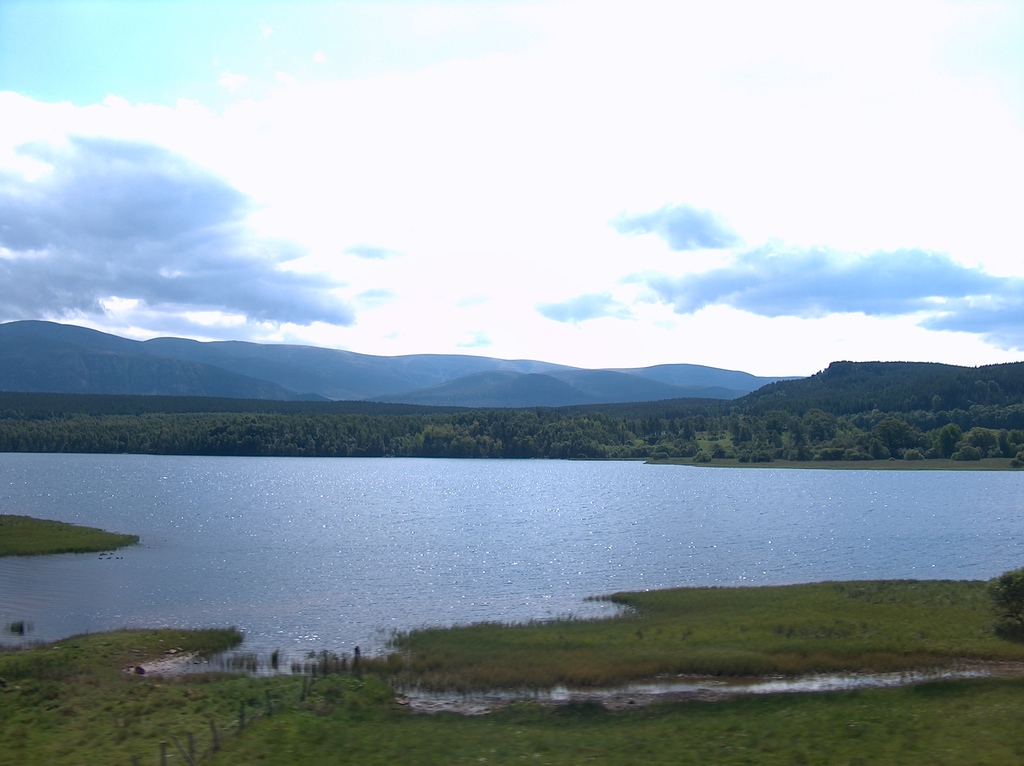
Loch Insh
Aviemore was once an important junction on the Highland Railway network. The station is a very attractive wooden building with three platforms and numerous buildings.
It was the largest on the former Highland Railway network and has large canopies spanning the platforms. The station is also home to the Strathspey Railway on platform 3 so keep an eye out for a steam train while at Aviemore station.
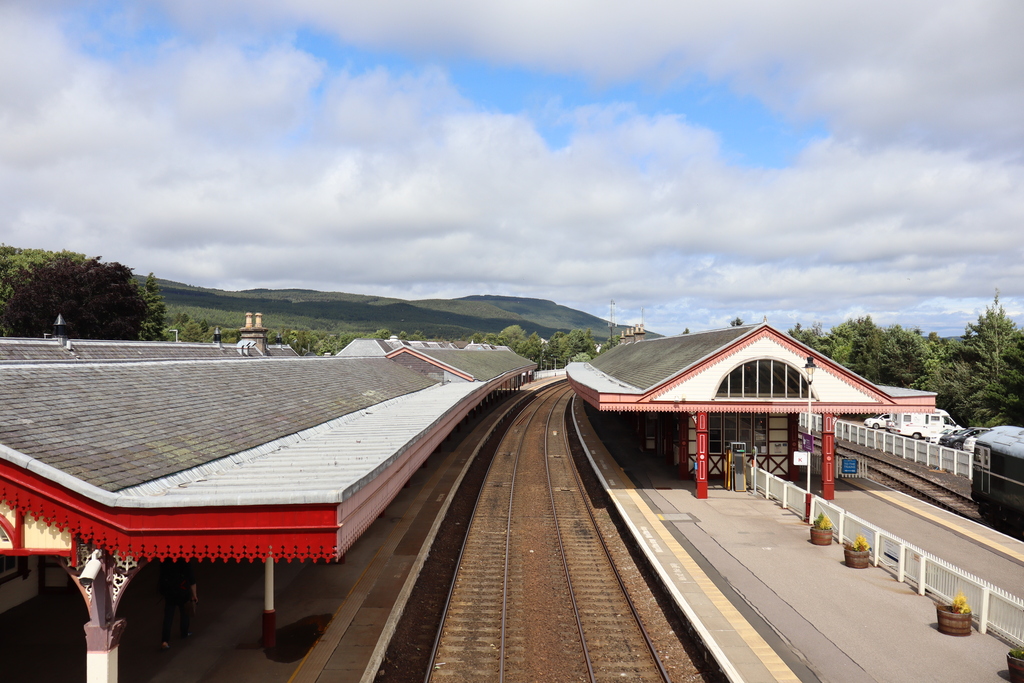
Platforms 1 and 2
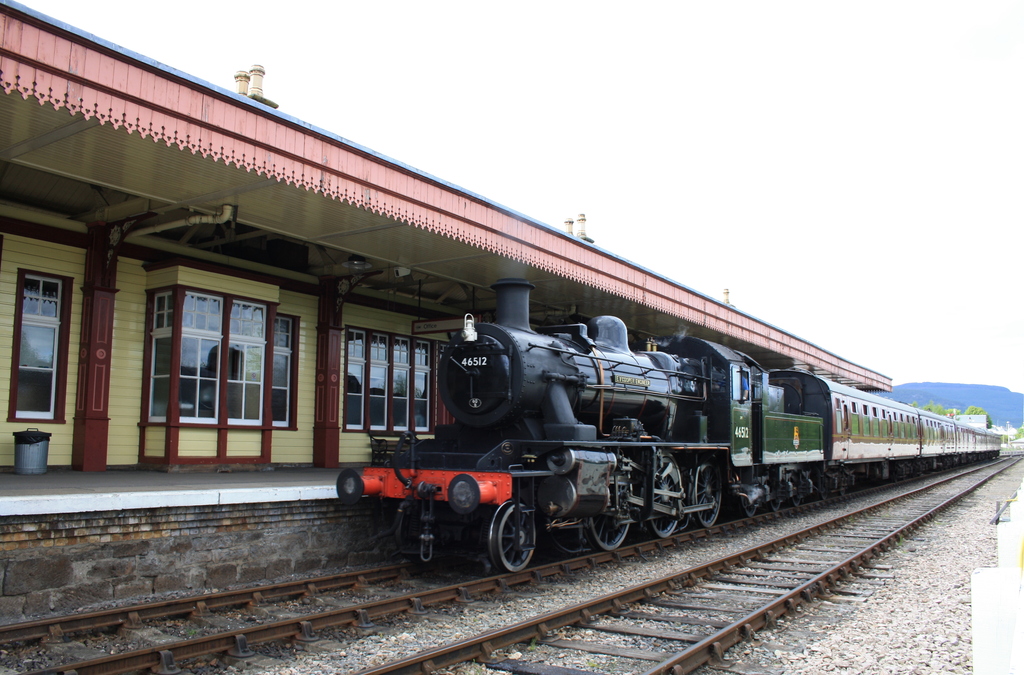
Strathspey Railway on Platform 3
Returning to the train at Aviemore, the line makes its way through the forest and shortly arrives at Carrbridge. The area marks the limit the National Park. Carrbridge station is down a side road from the main part of the town.
On departure from Carrbridge the train takes a scenic route through the heather covered hills. Look out for the River Findon, crossed on an impressive viaduct.
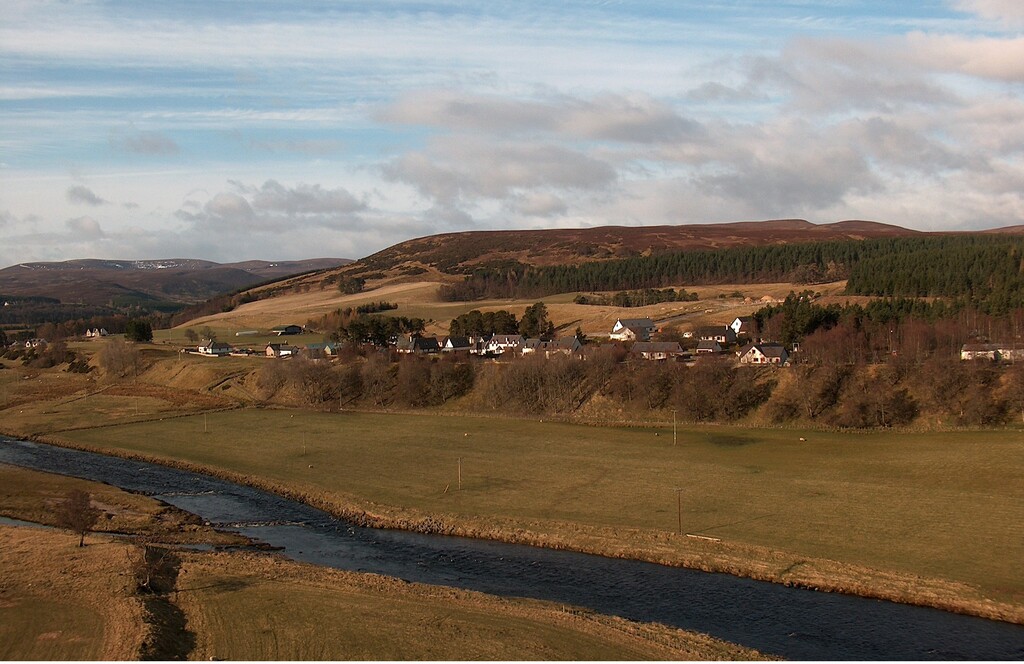
Spring view from Findhorn Viaduct (Tomatin) early in the morning
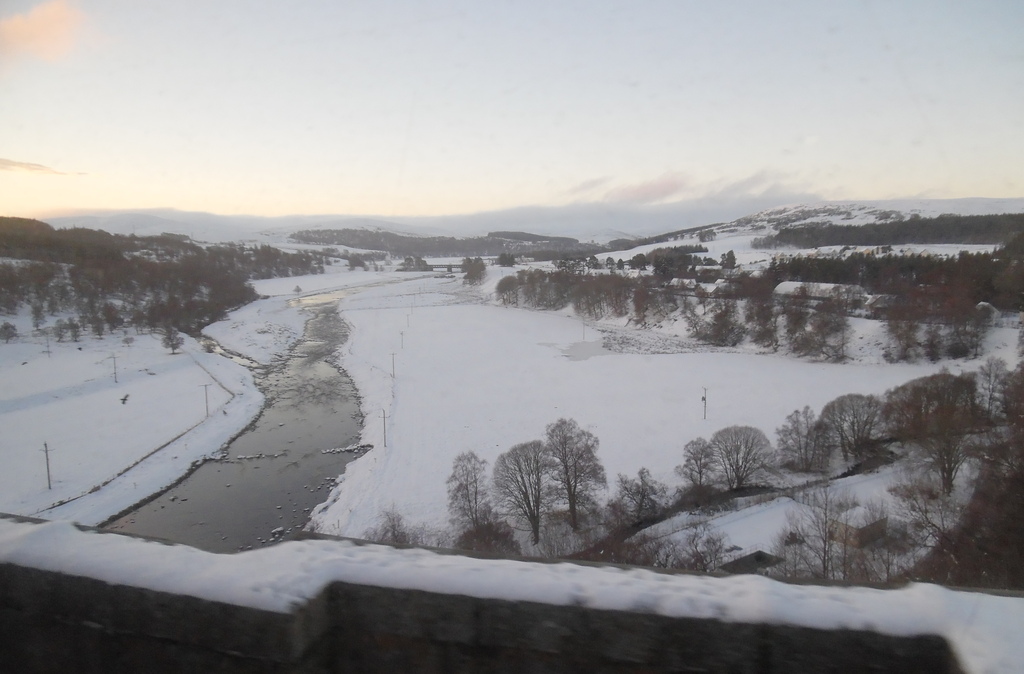
Same view on a winter's morning
Also watch out for Slochd Summit, the second highest part of the line. Further north the train crosses another of the line’s highlights – Culloden Viaduct.
This impressive stone arched structure carries the line across the valley at Culloden. Culloden was the site of the Battle of Culloden in 1745.
The train curves to face Inverness and on this last downhill section passengers are treated to a wonderful view of the Moray Firth. On a summer’s evening when arriving on the ‘Highland Chieftain’ from London the sight of the sun setting over the Firth is a spectacular end to a wonderful journey.
Soon the train is passing through the Inverness rail yards and arrives into the station.
Inverness is known as the capital of the Highlands. It retains its original, although much modernised, railway station situated next door to the former Highland Railway hotel. The station has an unusual shape with lines going north, east and south from this terminus.
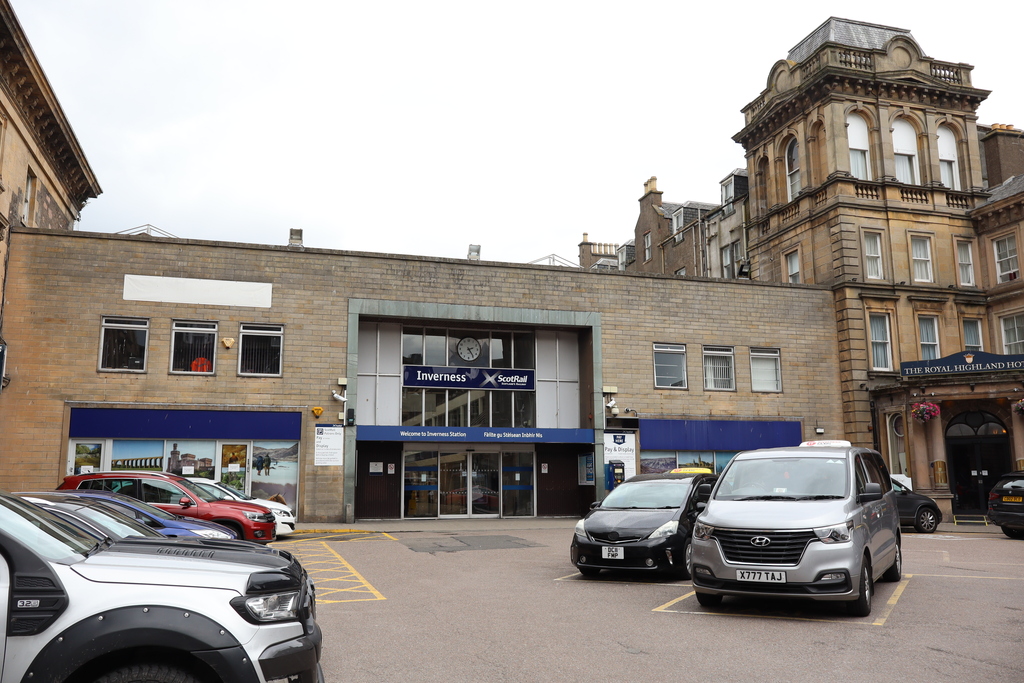
Inverness train station was opened in 1855
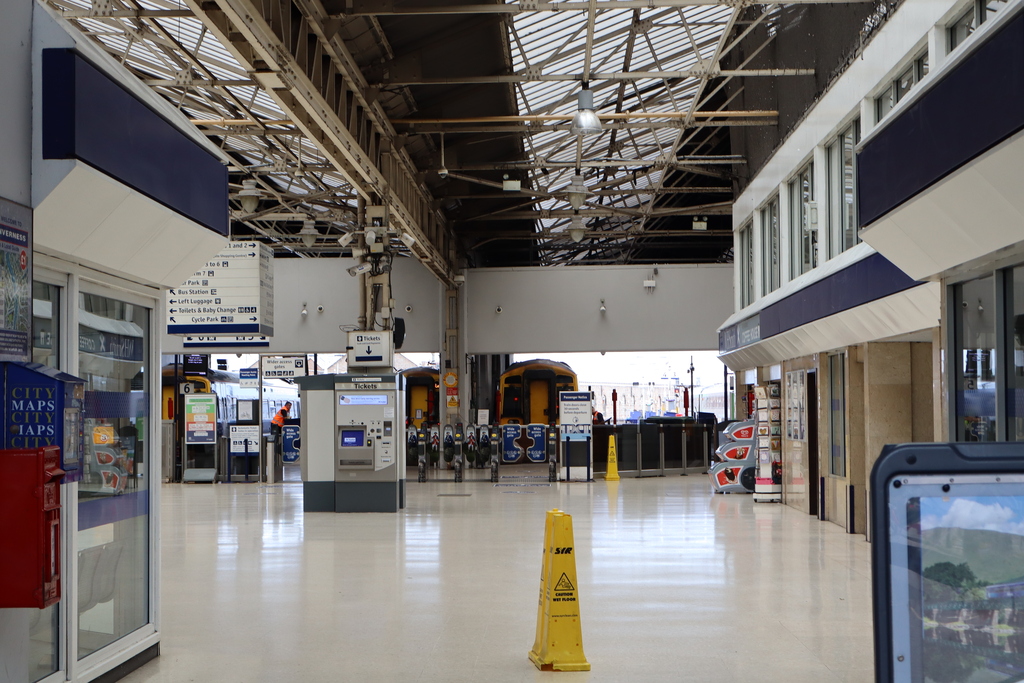
Inverness train station has a waiting room, ticket office, shop and refreshments
Page last updated 23 September 2025